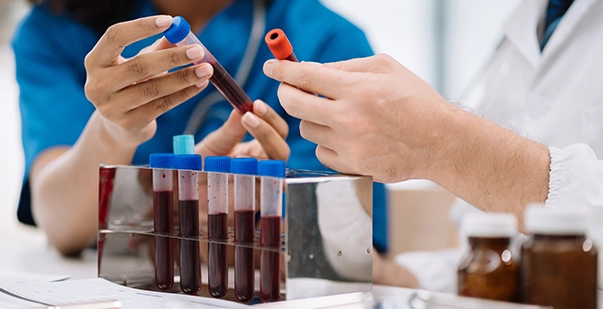Understanding bloodborne pathogens is crucial to maintaining safe and healthy environments, especially in the realm of healthcare. According to OSHA, around 5.6 million workers are at risk of exposure to these invisible threats. Around three million exposures to bloodborne pathogens occur annually, which is concerning. This is why we would like to take this opportunity to explore more about bloodborne pathogens, their associated risks, and strategies for protection. Keep reading to learn what bloodborne pathogens are.
What is a bloodborne pathogen, and what makes them concerning?
Bloodborne pathogens are tiny microorganisms, like bacteria, that live in human blood and body fluids. They can cause diseases in humans and can be serious in nature. Pathogens are concerning because they often spread from one person to another. This happens through direct contact with an infected person’s blood or body fluids. If someone with a disease causes bleeding, you can get the disease if exposed to the blood.
Some of the diseases caused include HIV, hepatitis C, and hepatitis B, which can be threatening in nature. These diseases do not have any symptoms, and they might not even know that they are spreading the disease to others. This is why it is crucial to understand bloodborne pathogens, especially for healthcare professionals who might come into contact with body fluids.
Read More: Board-Approved Bloodborne Pathogens Certification for Pharmacy Professional
What are the most common bloodborne pathogens?
Bloodborne pathogens cause several diseases; however, some are more common and are frequently caused. Here are the most frequently seen diseases caused by microorganisms:
- HIV (Human Immunodeficiency Virus): It’s a virus that attacks the immune system. Without blood transfusion, partial organ transplantation, or direct contact with certain body fluids from a person who has the virus, HIV is mainly transmitted.
- Hepatitis B (HBV): This is a relevant liver infection of hepatitis virus B. It can cause infection only if one’s blood, semen, or any analogue of that is affected by this virus and if it gets into the human body of a person who is not previously infected by it.
- Hepatitis C (HCV): Hepatitis C is also a viral condition that causes hepatocyte inflammation and progresses even to hepatocellular damage in more severe cases. Its most usual route of spreading is through direct contact with the blood of a person who turns out to be HIV positive.
- Syphilis: The common sexually transmitted disease, otherwise known as the bacterial infection, is usually transmitted through contact by sex. It may begin with a painless sore.
- Brucellosis: It is a bacterial disease that is transmitted from animals to humans via unpasteurized milk, cheese, fresh vegetables, and other products derived from animals.
- Malaria: This is a disease transmitted by a parasite, which is transferred to humans by the bites of mosquitoes and infected ones.
How do you prevent exposure to bloodborne pathogens?
It is crucial to prevent exposure to bloodborne pathogens, especially for those who work in healthcare. Here are the steps to help minimize the risk:
- Use Personal Protective Equipment (PPE): The set of PPE includes gloves, masks, and eye protection, as well as gowns. However, it is important that you do this whenever you might get into a situation where you may encounter blood or body fluids.
- Practice good hand hygiene: Wash your hands with soap and water thoroughly, and avoid eating or touching your face until the potential exposure is washed off your hands. If you aren’t able to wash your hands using soap and water, a substitute is a hand-sanitizing cream that is alcohol-based.
- Get Vaccinated: Also available for Hepatitis B and other blood-borne diseases, vaccines make it safer and easier for healthcare professionals who are working in risky places. It is better to get vaccinated if you are exposed to risky environments.
- Clean and Disinfect Surfaces: Disinfect surfaces regularly using a bleach solution that has been certified by the EPA or alternate EPA-registered products to prevent pathogen growth.
- Follow Safe Work Practices: If there is the possibility of getting infected, the following procedures should be followed: not eat, drink, or put on any cosmetics or lenses.
- Train and Educate: Periodic sessions and learning focused on risks present by blood-borne pathogens can educate people on why threats are there and how to keep themselves safe.
- Respond Appropriately to Exposure: When you are within reach of blood or body fluids, wash them off as soon as possible with soap and water, and then immediately write down the incident in your supervisor’s log. Unlike many people, you may need to get tested and get post-exposure treatment.
Read More: Online Bloodborne Pathogens Test for Medical Pros: Get Certified
Conclusion
Now that you have understood what are bloodborne pathogens, prevent exposure to bloodborne pathogens and ensure health and safety, especially in environments with potential contact with blood or body fluids. The key measures include using personal protective equipment (PPE), getting vaccinated for preventable diseases, practicing proper hygiene, and a lot more. By adopting these strategies, you can reduce the risk and stay protected.













